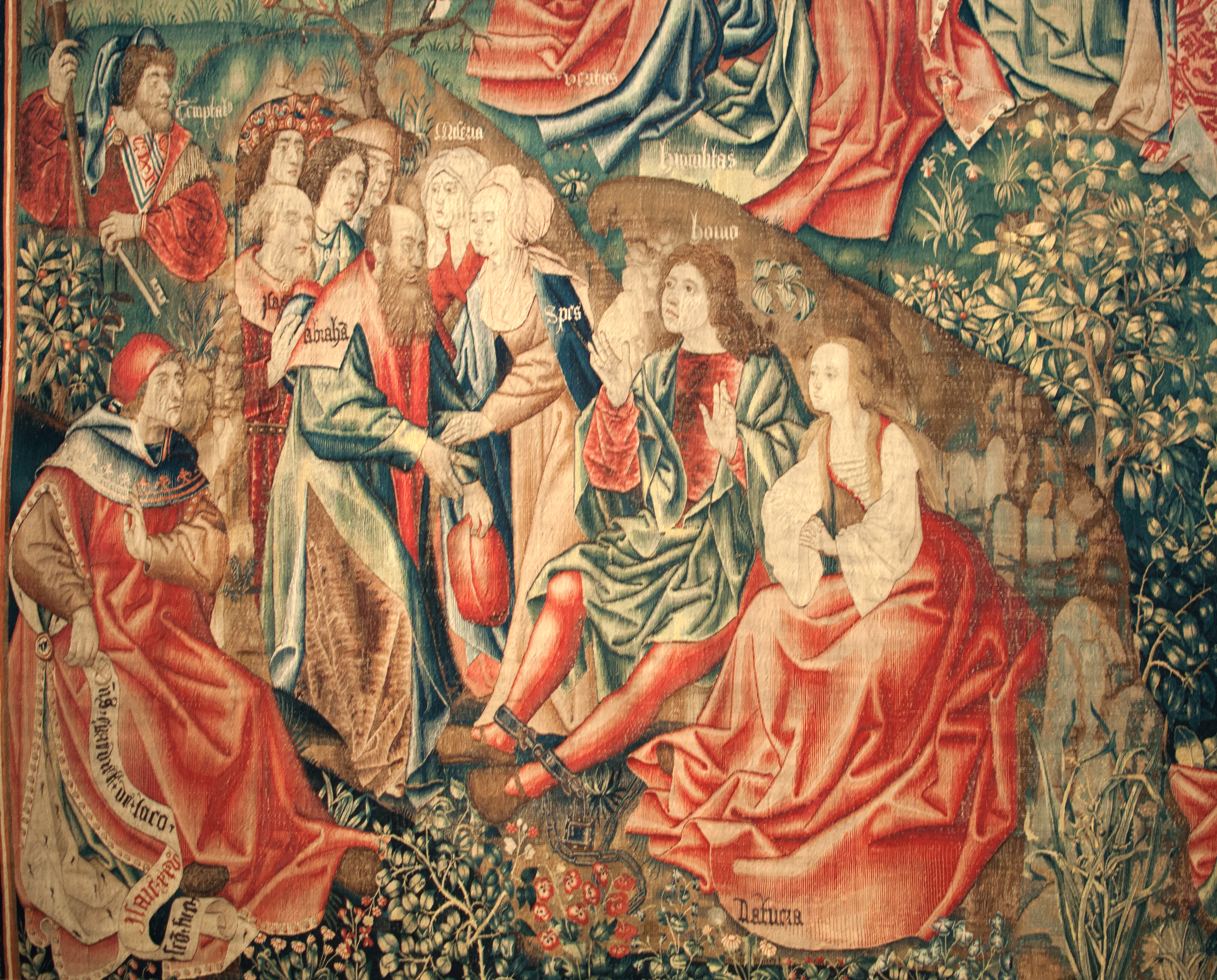Christ is Born as Man's Redeemer: Detail, Man unable to save himself

South Netherlandish, 1500-1520
In the collection of the Bishop of Burgos, Spain, soon after completion
Wool and silk
The Cloisters, New York City
"Man" is the shackled figure on the right in the green cape, labeled homo. The woman at his left is labeled Natura, "Nature." On his right is a trio of figures whose arrangement refers to the plight of fallen Man. In the forefront, the female figure Hope takes Abraham (representing Faith) by the hand. But behind them stands Misera or Wretchedness.
Behind Abraham are Abraham's progeny: Isaac, Jacob, an unlabeled figure who could be Esau, and David behind them in a crown. Behind this group stands a man with a key and a banner (whose top was left out of the photo). His label technically reads Temptat[us], "the tempted man," but probably the artist intended Temptat[io], "Temptation."
The idea seems to be that fallen Man may have hope and faith but these will not break his chains nor relieve his wretchedness. That is possible only for the Savior, whose birth is prophesied in the phrase on the scroll held by the man in the lower left: D[omi]nus egrediet[ur] de loco s[an]c[t]o suo Isaiae xxvi, "The Lord will come out of his holy place Isaiah 26."
View this image in full resolution.
View the entire tapestry
Read more about images of the Nativity.
Photographed at the Cloisters by Richard Stracke, shared under Attribution-NonCommercial-ShareAlike license.